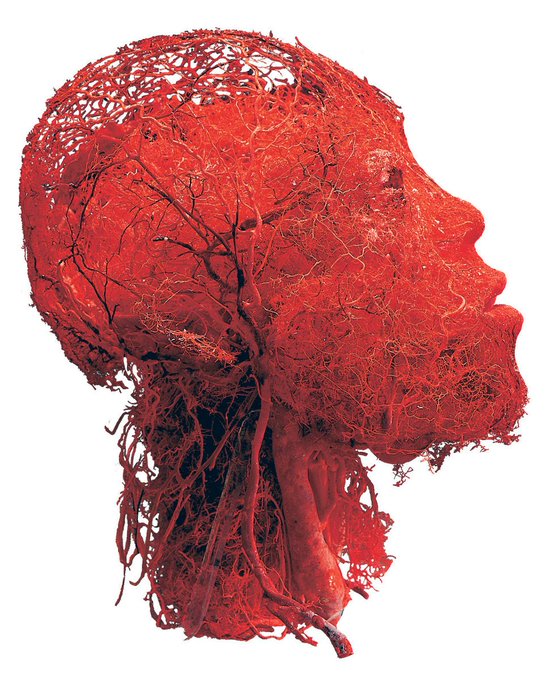Gunther von Hagens is a German anatomist and creator of the Body Worlds exhibition, which showcases human bodies preserved through a process called plastination. One of his most stunning works is the plastinated specimen of the blood vessels of the head and the brain, which offers a unique and impressive view of our internal structures.
Plastination is a technique where bodily fluids and fats are replaced with plastic, preserving the specimen for years to come. Von Hagens’ technique allows for the preservation of bodies and body parts in various poses and states, giving visitors a glimpse into the inner workings of the human body.

The plastinated specimen of the blood vessels of the head and the brain is one of the most striking examples of von Hagens’ work. The specimen is a clear and detailed representation of the intricate network of blood vessels that runs through our heads and brains. The specimen is carefully dissected and preserved, allowing viewers to see the tiniest of capillaries and veins.
The specimen is also a great tool for medical professionals and students to study the anatomy of the head and brain. The plastination process not only preserves the specimen but also makes it durable and easy to handle, making it an ideal tool for teaching and learning.

Von Hagens’ work has been controversial, with some criticizing the exhibition for being too graphic and disrespectful to human remains. However, others argue that the Body Worlds exhibition offers a unique and educational opportunity for people to learn about the human body in a way that was not possible before.
Regardless of one’s opinion of von Hagens’ work, there is no denying the impressive view of the blood vessels of the head and the brain in the plastinated specimen. It offers a unique and fascinating insight into our internal structures and reminds us of the complex and intricate workings of our bodies.



